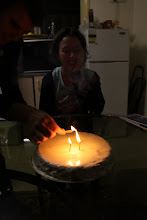In a recent reading group, the term ‘Slasher’ was thrown up in the air to describe the particular place in the art world which one might place a person like Seth Price. Price is the writer of this article Dispersion, yet he is also an artist referenced within the piece, writer/artist (writer (slash) artist).
The nature of this category in which we find Price in, before Price writes or makes or types anything, might be used as a way of thinking through one of the relationships Price is concerned with in this article. In the same way that the role that Price occupies sets up an uneasy combination between artist and writer (or critic), the archive embodies the strained relationship between the artwork and the document, in particular, within the ‘unruly archive’, the internet (Price, 2002,11).
In the case of the artwork/document as much as in the writer/artist the slash indicates a sort of inescapability from either part of the phrase. The slash implies that there is no situation where one might completely disguise one half of the combination. One is reminded of the movie Stuck on You (dir. Farrelly brothers, 2003) in which Siamese twins, who share only a liver, at first revel in the advantages of their body (i.e. as a hockey goal keeper), but as the film and their lives progress, find themselves constantly struggling to keep the other part of themselves out of the picture (on dates, while one twin is acting).
While thinking about the relationship between the document and the artwork in this Siamese twin sort of way makes the advantages of such combinations appear and then unravel themselves, the idea of a ‘slasher’ has a nice sort of a violence embedded in its sound, in a way, it refers back to the violence of the archive, the violence in the relationship between objects and traces which Jacques Derrida explores in Archive Fever(1996, 2). Price highlights this violence and tension between the artwork and the document as he half sarcastically lists for the reader the documents that ‘make’ artworks, art; the documents of the gallery context, the documents of art criticism and review, the reproduction of the artwork as ‘a photograph in an art magazine’ (11).
Works Cited
Derrida, Jacques. Archive Fever: A Freudian Impression. Trans. Eric Prenowitz. Chicago: University of Chicago Press, 1996.
Stuck On You. Dirs. Bobby Farrelly, Peter Farrelly. Perfs. Matt Damon, Greg Kinear, Eva Mendes Prod. Twentieth Century Fox Film Corperation, 2003.
Price, Seth. “Dispersion.” Distributed History. 2002. March 12 2008 at 0805.

5 comments:
The term 'slasher' does have a somewhat comical tone to me - mental image of Julian Schnabel, butcher's knife poised for attack...
I'd like to know what Derrida thought of the internet as archive. Although our sense of time means that we see internet information as 'dated' very soon after its digital publication, the internet certainly seems to have more vitalty than any more traditional sort of archive.
Traditional forms (books, manuscripts) were relevant for long periods of time, as opposed to electronic data which is constantly updated. Yet we often identify with an obselete piece of the internet more than, say, an old religious text or piece of cartography, even if that information is still true.
Do you know of any later texts in which Derrida refers to the electrinicisation of the world?
The metaphor of the 'slasher' as a conjoint twin is very good. It is interesting that when someone holds the position of a slasher, instead of being praised for their multi talents they are often critiqued for a lack for commitment to a singular practice. An individual talent is no longer assessed on its own merits but is muddied by its partner on the other side of the separatrix, the twins don't cooperate so one is always dragging the dead weight of the other.
The refference to "Stuck on You" was avery interesting way to describe the slasher. If you looked at a siamese twin from side on, there is a possibilty that you wouldn't see the other half.
Your analogy of the "slasher" is interesting if not a bit "arty" but effectively what you are saying is that some distance gives perspective, something that becomes obvious with age! I, as one of the aged, dont find the net violent, just very messy. I wish you young people would pick up after yourselves!
Charles – you have created a very funny picture in my head.
Anna – I also liked the reference to ‘stuck on you’; I’m interested in the whether it is more useful for an artist to accept the violence of the ‘slasher’ model and to somehow use it to an advantage, or whether it is possible to avoid/neutralise it. It also seems there is a struggle between identity – needing to be identified, and definition – not wanting to be defined.
Post a Comment